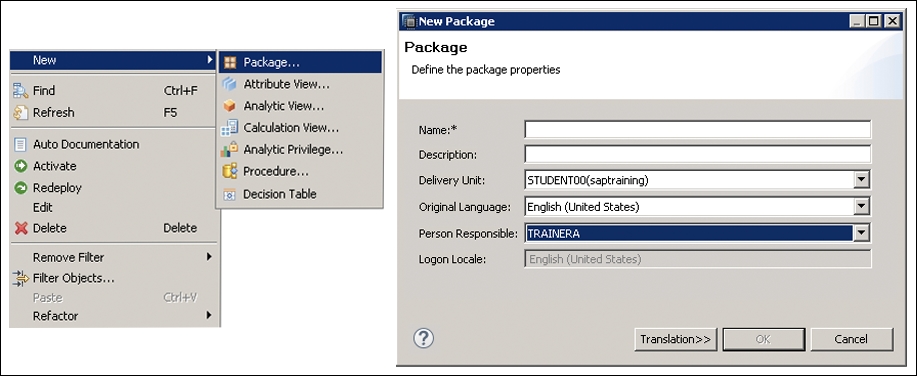Creating package and delivery unit
Package is a repository used to organize various modeling artifacts along with other modeling objects such as analytical privileges and procedures. It is assigned to a delivery unit so as to transport the objects it contains to another environment.
We can create a package as illustrated in the following screenshot:

Creating a new Package
Points to remember while creating a new package:
Create one top-level package for all of the customer's content (if acceptable to the customer).
Create a subpackage for the content you will deploy in the project. This could be on the basis of different scrum teams or application areas.
Multiple subpackages might be created, if required or desired, to organize a large amount of content.
Create one top-level package called
dev(ordevelopment) for work in progress.Create a subpackage for each developer such as task in SAP R/3.
Create all analytical and calculation views under these play area packages.
Once the development is complete...



























































